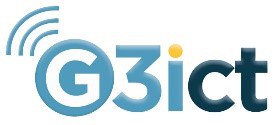25th Anniversary of the ADA Series: Business Case for Hiring Persons with Disabilities
Posted on June 30, 2015

CEO and Founder, Ruh Global IMPACT and Chair, G3ict Employability and Technology Group
In the concluding part of the blog series on celebrating the 25th anniverary of the Americans with Disabilities Act, Debra Ruh makes a compelling case for hiring persons with disabilities, not just to increase business bottom-line, but to also foster positive effects of workplace inclusion.
Image: It is essential to create a disability inclusion business case that is unique to your organization.
Making a Business Case:
The business case can range from a comprehensive and highly structured plan to a brief and informal plan. The plan should include background of the project, the expected business benefits, any options that need to be considered, expected costs and a gap analysis that includes risks and rewards.
Here are some suggestions for your business case:
- Frame the issue. Frame in terms of return on investment, direct and indirect benefits to company, productivity gains, focus on all employees and the positive bottom-line. Do not frame only in terms of “persons with disabilities” or in terms of “compliance.”
- Recognize the need to develop a talent management strategy. Shortage/shrinkage of talent pool (e.g., retirement, globalization, population changes and other trends). These changes are a significant threat to business success. People with disabilities are an untapped labor pool.
- Understand changing demographics of the workforce. More people will be working with a disability/functional impairment e.g., aging/mature population, increased survival rate of premature infants, changing expectations.
- Focus on accessibility as a “differentiator.” Applicants, employees, and customers are increasingly seeking accessible information and communication technology.
- Integrate accessibility/universal design standards and governance into infrastructure to help positively position an organization.
- Enhances reputation as an exemplary employer, exemplary neighbor and business (goodwill), and exemplary company with innovative, accessible solutions. These efforts can also expand the scope of talent recruitment (attract talented applicants), build and increase customer base.

Image: Including workers with disabilities in your workforce and blending ICT accessibility into your process has many bottom-line benefits.
Expand Corporate Policies & Process
Organizations are always seeking innovative ways to improve business operations, reduce expenses, improve productivity, differentiate products and services from competitors and promote a positive brand. Including workers with disabilities in your workforce and blending ICT accessibility into your process has many bottom-line benefits.
Recent trends demonstrate that everyone – people with and without disabilities - benefit when businesses give customers with disabilities an equal opportunity to obtain their goods, and governments provide equal access to services. By positively recognizing people of all ability levels, organizations can make it easier for everyone to access and purchase services or products. This is not only an important part of complying with international accessibility standards, but also of any organizational management plan.
Organizations can leverage a new market segment by demonstrating their leadership in the growing disability inclusion and accessibility movement, and therefore capture a valuable untapped employee and consumer base.

Image: Organizations need a roadmap that lays out the framework for guiding the mobilization of an organization around the disability inclusion and accessibility strategic plan.
Inclusion and Accessibility Roadmap to Minimize Risk:
Businesses need an accessibility framework for guiding and measuring the mobilization of an organization around its strategic plan to include individuals with disabilities. The “roadmap” will help ensure that stakeholders understand the decisions that must be made, and the parties responsible for implementing the plan. The roadmap must include tasks, deliverables, timelines, and measurements, as well as backup plans in case certain deliverables cannot be achieved.
The roadmap allows an organization to deploy a centrally-developed business strategy in a uniform manner. IT can be applied to organizations of all sizes, including multi-national corporations with global customer bases, market and regulatory differences. Disability inclusion and accessibility can be risky without a plan and subject to departmental interpretations and adjustments across diverse organizations.
Organizations need a roadmap that lays out the framework for guiding the mobilization of an organization around the disability inclusion and accessibility strategic plan. The roadmap will enable leaders and team members to clearly understand each element for rolling out the organizational strategy. The roadmap will then be translated into a project plan that will specify the tasks, timelines, responsible parties, measurements, deliverables that are associated with each phase.
The roadmap should be designed to illustrate the elements that require consideration, make the strategy actionable and acknowledge the inter-dependencies of the elements that serve as a framework. The inclusion and accessibility roadmap should be integrated into existing and future planning cycles.
Workplace inclusion also allows an organization to hire and develope diverse, qualified and talented workforce. Positive benefits are: increased productivity, loyalty to the employer, potential for brand recognition, and expanding market opportunities. Businesses cannot afford to ignore this motivated workforce of individuals with disabilities.
Join me in celebrating the 25th Anniversary of the Americans with Disabilities Act (ADA). Follow me on Twitter.






























